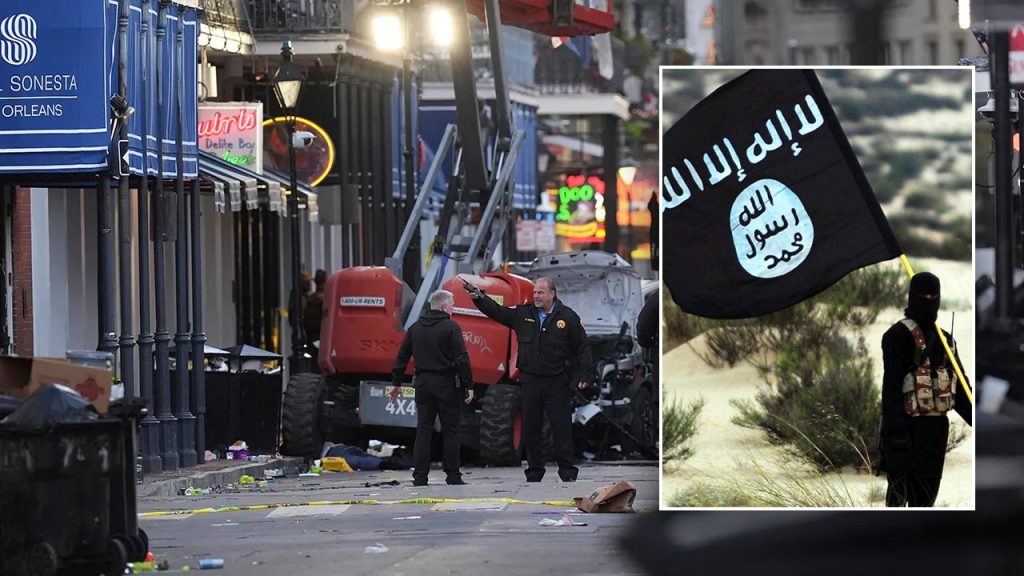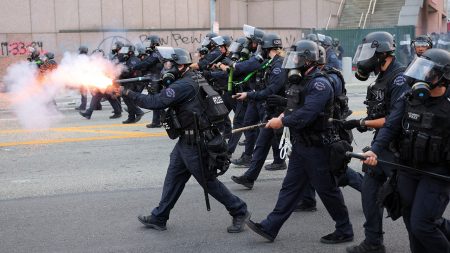The New Year’s Day tragedy on Bourbon Street in New Orleans, where a pickup truck plowed into a crowd celebrating the festivities, claimed the lives of ten individuals and left dozens injured. The incident, occurring around 3:15 a.m., unfolded just days after a pro-ISIS online platform disseminated a message inciting Muslims to carry out jihadist attacks in the United States, Europe, and Russia during the New Year period. The FBI identified the driver as 42-year-old Shamsud Din Jabbar from Texas. Following the attack, Jabbar reportedly exchanged gunfire with law enforcement officers before tragically succumbing to his injuries. The discovery of an ISIS flag attached to the vehicle’s trailer hitch prompted an immediate FBI investigation into Jabbar’s potential connections to the terrorist organization.
The chilling online message circulated on Telegram, a messaging app, explicitly urged Muslims residing in Western countries to target New Year’s Eve celebrations. It characterized these festivities as “the feast of their polytheism,” advocating for their disruption through acts of violence and terror. The message invoked religious justifications, calling upon individuals to emulate historical figures and avenge the perceived injustices suffered by their fellow Muslims. It employed vivid and violent language, urging adherents to “take out the swords from their sheaths” and transform celebrations into “mourning and calamity.” The post also aimed to instill a sense of urgency and duty, portraying the attacks as a religious obligation and a path to divine favor.
The message’s inflammatory rhetoric extended to questioning the safety and complacency of Muslims residing in Western countries while others were allegedly confined in detention centers and camps. It exhorted readers to emulate prior acts of violence against “Crusaders,” invoking an image of a “hungry lion” attacking its prey. The message aimed to ignite a sense of shared grievance and inspire action, portraying attacks as a form of righteous retribution. The explicit references to “killing, spite and torture” underscored the intended brutality of the urged actions.
The incident on Bourbon Street tragically echoed the disturbing call to action, raising concerns about the potential influence of online extremist propaganda in inciting violence. The timing and location of the attack, just days after the online message’s circulation and amidst a large public gathering, suggest a potential link, albeit one that requires further investigation by authorities. The incident highlighted the vulnerability of public spaces during periods of celebration and underscored the ongoing challenges in countering extremist rhetoric and preventing acts of terrorism.
The New Orleans attack followed closely on the heels of a suspected terror attack in Germany, where a car rammed into a Christmas market in Magdeburg on December 20th. The incident resulted in the death of five people, including a young child, and injured over 200 others. A psychiatrist from Saudi Arabia was reportedly arrested in connection with the attack, further highlighting the global reach of terrorism and the diverse backgrounds of those allegedly involved. The proximity of these two incidents underscored the persistent threat of vehicular attacks targeting crowded public spaces, a tactic increasingly employed by extremist groups to maximize casualties and sow fear.
The New Orleans incident prompted immediate responses from law enforcement agencies and government officials. The swift identification of the suspect and the initiation of an FBI investigation into his potential links to ISIS demonstrated the seriousness with which authorities approached the incident. The discovery of the ISIS flag on the vehicle further intensified concerns about the potential ideological motivations behind the attack. The incident served as a stark reminder of the ongoing need for vigilance and preparedness in the face of evolving terrorist threats. The incident and the preceding online call to arms highlight the complexities of combating terrorism in a digitally connected world where extremist ideologies can be rapidly disseminated and potentially incite violence.










